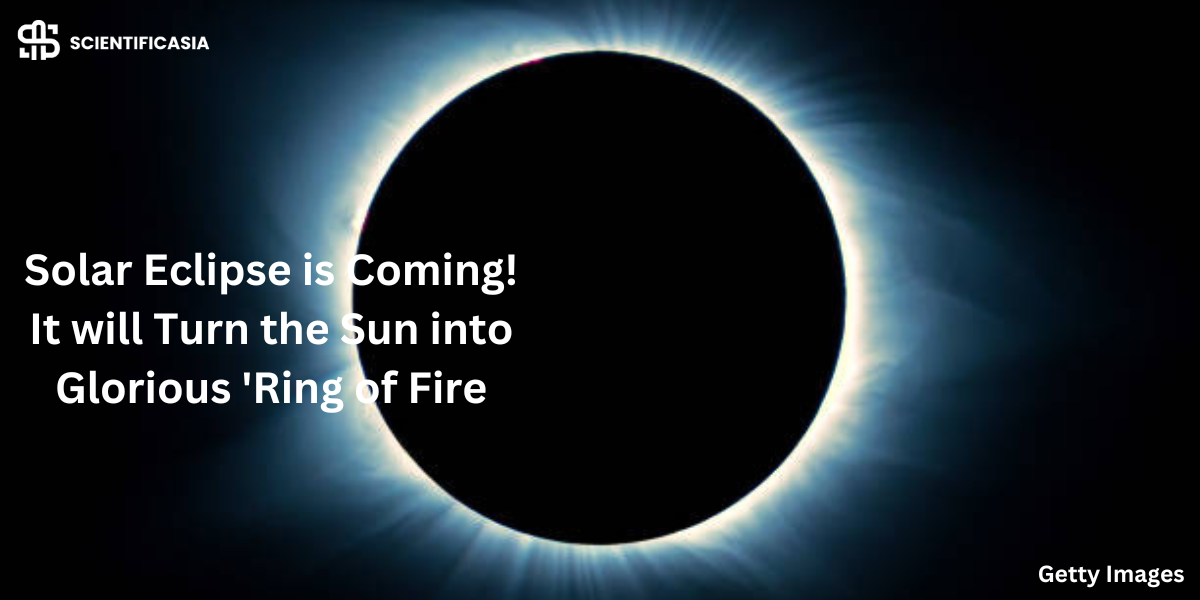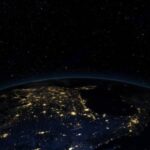Scientific Asia: Today, October 2, a solar eclipse will occur. It will be seen as a ring of fire in parts of the Pacific Ocean, southern Chile, and southern Argentina.”
If you can’t make it to the eclipse, you can watch it online at Space.com thanks to TimeandDate. You can also keep up with all the action on our solar eclipse live updates website.
“The best time to watch live streams is between 3:03 and 3:09 PM EDT (1903 to 1909 GMT). You can see the “ring of fire” for up to 6 minutes and 11 seconds from Easter Island (also known as Rapa Nui).” The annular phase of the eclipse will first be visible from Earth at 12:50 p.m. EDT (1650 GMT).
The moon orbits Earth in a slightly elliptical path, sometimes going closer to the planet than farther from it. An annular eclipse, or “ring of fire,” happens when the moon is far from Earth. It does not completely obscure the sun, unlike a total solar eclipse. All that remains is a distinct ring of light in the sky that is referred to as the “ring of fire.”
Only over 175,000 individuals reside in the annularity path for today’s eclipse, which is between 165 and 206 miles (265 and 331 kilometers) wide, according to TimeandDate. “If you’re outside the area where you can see the “ring of fire,” you might still see a partial solar eclipse. This means the moon will look like it’s taking a “bite” out of the sun.”
Annular eclipse vs. total eclipse
“An annular eclipse is a bit brighter than the one we saw on April 8th. This happens when the moon is further away from Earth like it will be on October 2nd.”
As a result, the moon only completely covers the central region of the sun, letting light break out around the edges and producing the illusion of a “ring of fire.”
“Only people who are exactly where the eclipse is happening, such as those on Easter Island, can see the ‘ring of fire.'” The surrounding area will not get this perfect ring; instead, they will observe a fading effect and get a partial eclipse.
Must Read:
A new mini-moon is coming into the earth, but not for a long time
NASA Invites Space Enthusiasts to ‘Observe the Moon Night’ on September 14
Watching a partial eclipse
Even if you view an annular eclipse from the path of annularity, NASA states that it is never safe to look directly at one. Your eyes may be harmed by the sun’s unprotected areas.
This eclipse must be viewed using eclipse glasses. The American Astronomical Society states that if your eclipse glasses are official ISO 12312-2 and in good condition, you should be able to use them again after the April 8 total eclipse.
Extended eclipses and the upcoming eclipse
To sum up, the eclipse on October 2 is an extended annular eclipse. Along its central path, the eclipse will endure 7 minutes and 25 seconds.
Along its center path, the complete eclipse that covered the United States, including most of Texas, lasted for 4 minutes and 52 seconds.
It will be some time before we see another annular eclipse in a year with so many eclipses. February 17, 2026, over Antarctica, will be the next one. August 12, 2026, is the date of the next total solar eclipse. Russia, Iceland, Spain, and Greenland will all be covered by that eclipse.
Where is it visible?
A map of the Oct. 2, 2024, annular solar eclipse. (Image credit: Michael Zeiler, GreatAmericanEclipse.com)
These are a few prominent places where the annular solar eclipse will occur.
- Rapa Nui, or Easter Island, Chile (5 to 6 minutes, 38 seconds of annularity beginning at 14:03 EAST, 67 degrees above North)
- Cochrane, the Chilean (5 minutes, 40 seconds of annularity starting at 17:21 CLST, 26 degrees above NNW)
- 6 minutes and 17 seconds of annularity beginning at 17:21 ART, 25 degrees above NW, Perito Moreno National Park, Argentina
- Puerto Deseado, Argentina (20 degrees above NNW, 3 minutes, 22 seconds of annularity beginning at 17:27 ART)
- Puerto San Julian, Argentina (5 degrees above NNW, 12 minutes of annularity beginning at 17:24 ART).
“Today, these cities and places will experience a partial solar eclipse. The list below shows how much of the sun will be covered in each location.”
- Galapagos Islands (1%)
- La Paz, Bolivia (1%)
- Rio de Janeiro, Brazil (9%)
- São Paulo, Brazil (10%)
- Buenos Aires, Argentina (42%).
- Montevideo, Uruguay (42%).
- Santiago, Chile (44%).
- Villarrica, Chile (63%)
- El Calafate, Argentina (83%)
- Falkland Islands (84%)
- South Georgia Island (76%)
- Punta Arenas, Chile (75%).
- Ushuaia, Argentina (72%
- Elephant Island (56%)
- Port Lockroy, Antarctica (44%).
Guide to watching the solar eclipse
NEVER gaze directly at the sun without protective eyewear, please. “ To watch this eclipse safely, you must wear special sun filters. It’s dangerous to look at the sun, even during a partial or “ring of fire” eclipse. Use solar eclipse glasses, and always put solar filters in front of your camera, telescope, or binoculars.” You can learn everything there is to know about safe solar observations from our tutorial on how to observe the sun.
This news was originally published on Space.
















